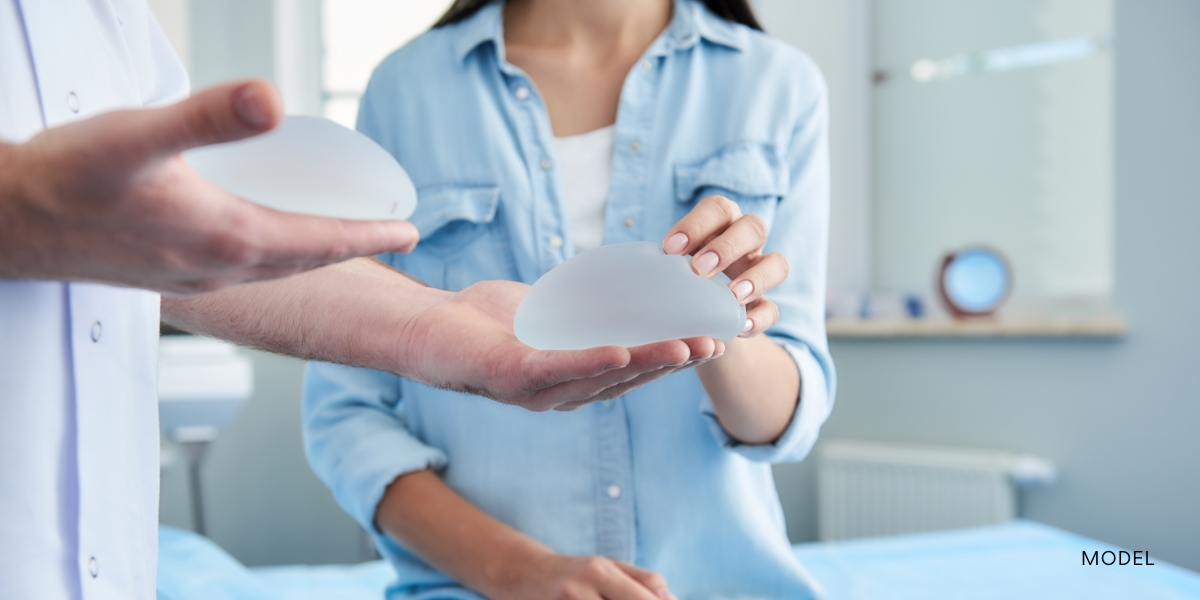If you’ve had breast implants or are thinking about getting them, you might hear about something called capsular contracture. At William Bruno Plastic Surgery, we believe it helps to understand this condition and how it’s treated. While it doesn’t happen to everyone, knowing the signs and available options can help you feel more confident about your care.
Understanding Capsular Contracture
After breast implant surgery, your body naturally forms a thin layer of scar tissue, called a capsule, around the implant. In most cases, the capsule stays soft and flexible. But sometimes, it thickens or tightens too much. When that happens, it can squeeze the implant and make your breast feel firm or look different, known as capsular contracture.
About 1 in 10 people with implants may experience this condition. It’s not always painful, but it can cause discomfort or change the appearance of the breast. If that happens, some people choose to have the implant and scar tissue removed or replaced.
How to Recognize Signs of Capsular Contracture
Plastic surgeons often use the Baker grading scale to describe different levels of firmness or visible changes:
- Grade I: Breast feels soft and looks natural
- Grade II: Breast feels slightly firm but looks normal
- Grade III: Breast feels firm and looks a bit uneven
- Grade IV: Breast feels hard, looks misshapen, and may cause discomfort
You may also notice tightness, swelling, or a rounder shape. These changes tend to happen gradually, so it helps to stay aware of how your breast feels over time.
Why Capsular Contracture Happens
There are a few reasons why capsular contracture may develop. Sometimes, a small amount of bacteria near the implant can lead to inflammation, which encourages thicker scar tissue. Other possible factors include:
- Bleeding near the implant (a hematoma)
- Certain implant types, such as textured surfaces
- Surgical methods, like placing the implant above the chest muscle or using the nipple area for insertion
People heal in different ways, so not everyone will develop capsular contracture even with the same type of surgery.
How a Plastic Surgeon Can Spot the Signs
If your breast feels slightly firm or tight, bring it up during a follow-up with your plastic surgeon. Most of the time, capsular contracture is diagnosed through a physical exam and by noting changes in how your breast looks or feels.
During breast augmentation, some steps may help reduce the chances of this condition. These can include placing the implant under the chest muscle, making the incision in the fold beneath the breast, and using tools that avoid direct contact with the implant. Some surgeons also suggest supplements like vitamin E to support softer healing.
Breast Revision Options for Treating Capsular Contracture
If capsular contracture develops, a board-certified plastic surgeon can help you decide what comes next. In milder cases, massage or medication may offer relief. For more noticeable changes, breast revision surgery may be a helpful option.
During this procedure, the surgeon removes the scar tissue and, in many cases, places a new implant to restore a softer feel and more balanced look. Many people feel more comfortable with their results after surgery.
Learn More About Capsular Contracture and Breast Revision
Capsular contracture doesn’t affect everyone, but it can be treated if it does. Understanding what to look for and how it’s managed can help you feel more at ease with your results. At William Bruno Plastic Surgery in Beverly Hills, board-certified plastic surgeon Dr. Bruno offers thoughtful care focused on comfort, balance, and long-lasting results.
Learn more about capsular contracture and how breast revision may help improve how your breasts look and feel.





